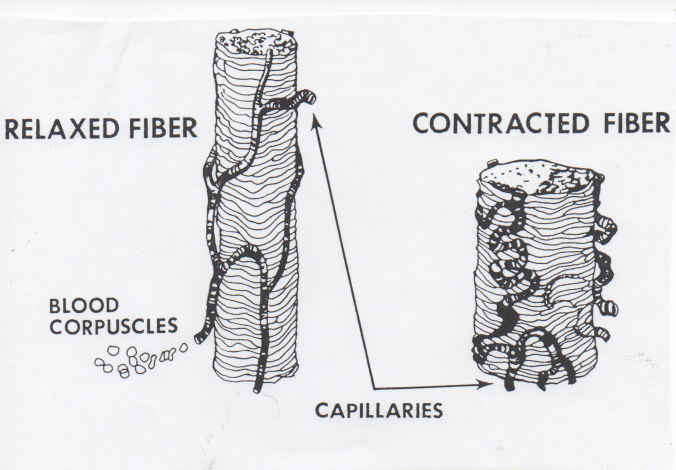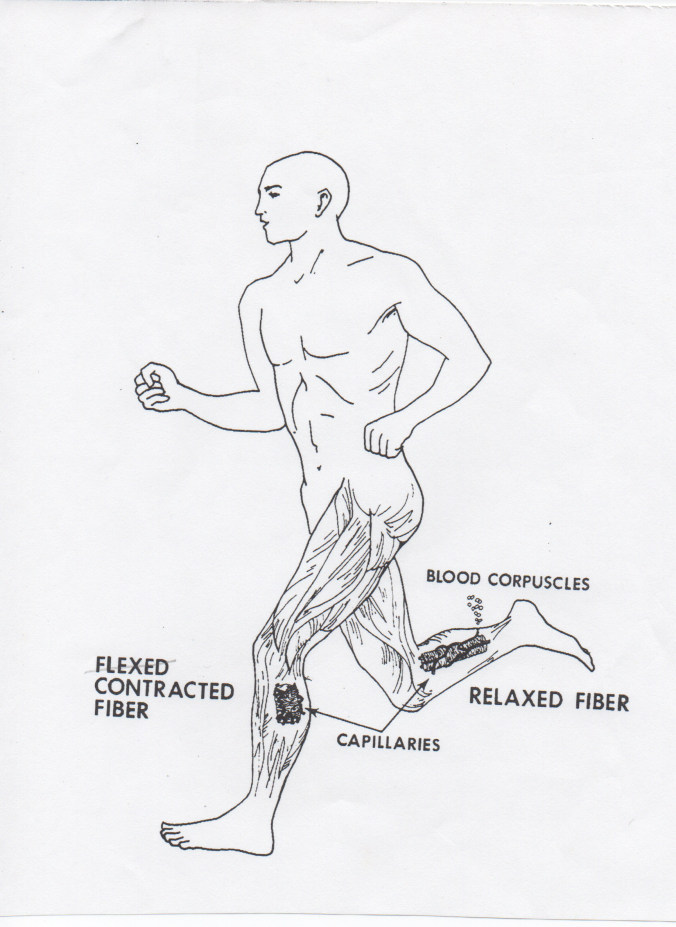Exercise-Ageing
Capillary "Kinking" Theory06/17
Understanding the principles of the “Capillary Kinking Phenomenon” will help you reach your maximum walk- pace potential
Below you will find a detailed presentation explaining the principles of this extremely relevant phenomenon
When the skeletal muscles in your legs contract during walking, they “kink” the surrounding-microscopic capillaries and actually stop the blood flow in these tiny-channeled blood vessels, Figure 1. This crimping maneuver prevents the blood flow from reaching the adjacent muscle fibers, depriving them of their normal blood flow. Therefore, during the time your muscle fibers are contracted, they do not receive the oxygen and glucose necessary to continue their contractions. Moreover, this crimping maneuver causes lactic acid, CO2 , and heat to accumulate within the muscle fibers, producing pain. And when the pain becomes intolerable, you have to terminate your walking-muscle contractions because you have reached a state of fatigue.
Capillary "Kinking" Phenomenon

Capillary "Kinking" During Walking

As the extended left leg strikes the ground, the muscles in that leg contract, “kink” the capillaries surrounding the adjacent muscle fibers, and occlude the blood flow in that respective muscle-fiber.
Contrarily, in the flexed leg, wherein the relaxed musculature does not cause a “kinking” of the capillaries, the blood vessels remain open, enabling the blood to flow freely, in and out of the relaxed muscle Fibers ‒ thus making possible the transport of the oxygen and glucose needed to provide the energy for contraction and the removal of the fatigue products such as lactic acid, CO2, and heat.
Now it becomes clear, the faster you walk, the shorter is the time your relaxed leg is able to transport the energy-producing nutrients needed for the continuation of walking-muscle contractions and the washing out of their fatigue products ‒hence the sooner you fatigue.
This is referred to as an anaerobic walking pace (without oxygen). That is to say, you are walking so fast you are not able to supply the oxygen needed to prevent performance fatigue. In this regard, your ideal training walk-pace would be to walk at an aerobic pace (with oxygen). In other words, walk slow enough to allow time for the blood flow in the muscles of your relaxed leg to transfer enough nutrients and wash away enough fatigue products to prevent the onset of performance-limiting fatigue. This walk-pace may be defined as “indefatigable.” This is how you are able to walk extremely long distances such as a marathon (26.2 miles) without experiencing terminating, cardiovascular fatigue.
Postulatum
Slow your performance pace and avoid the premature onset of fatigue